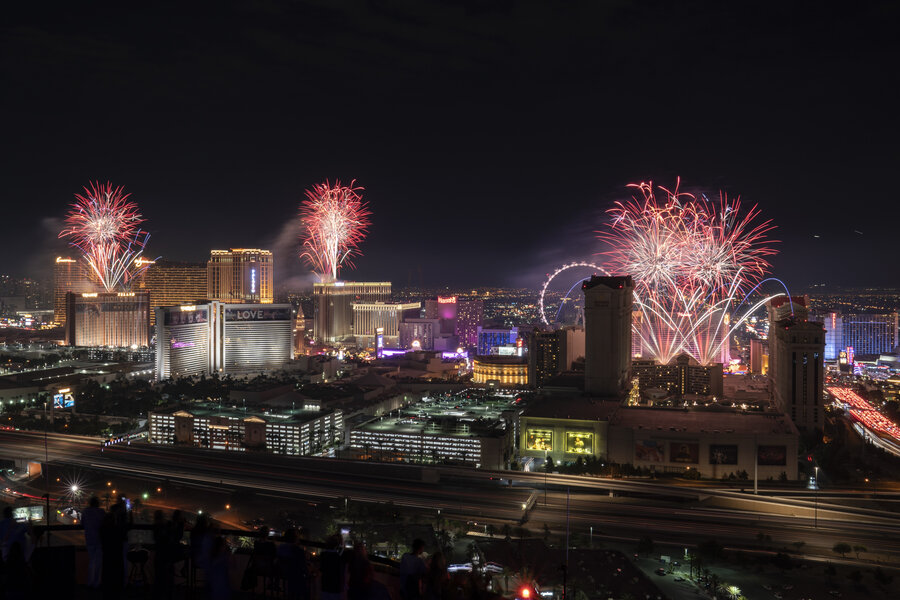What to know about Fourth of July holiday origins and traditions
Loading...
| St. Louis
The Fourth of July is Americana at its core: parades, cookouts, and, of course, fireworks.
Those pyrotechnics also make it an especially dangerous holiday, typically resulting in more than 10,000 trips to the emergency room. Yet fireworks remain at the center of Independence Day, a holiday 247 years in the making.
Here are five things to know about July Fourth, including the origin of the holiday and how fireworks became part of the tradition.
What’s the origin of Independence Day?
The holiday celebrates the Second Continental Congress’ unanimous adoption of the Declaration of Independence on July 4, 1776, a document announcing the colonies’ separation from Great Britain.
One year later, according to the Library of Congress, a spontaneous celebration in Philadelphia marked the anniversary of American independence.
But across the burgeoning nation, observations didn’t become commonplace until after the War of 1812. It quickly took off: The Library of Congress notes that major historical events in the 19th century, such as groundbreaking ceremonies for the Erie Canal and the Baltimore and Ohio Railroad, were scheduled to coincide with Fourth of July festivities.
How did fireworks become a July Fourth tradition?
The display of pyrotechnics has been a big part of Independence Day from the outset. Founding Father John Adams saw it coming.
Commemoration of America’s independence “ought to be solemnized with Pomp and Parade, with Shews, Games, Sports, Guns, Bells, Bonfires and Illuminations from one End of this Continent to the other from this Time forward forever more,” Adams wrote in a letter to his wife, Abigail, dated July 3, 1776.
Fireworks were around centuries before America became a nation. The American Pyrotechnics Association says many historians believe fireworks were first developed in the second century B.C. in ancient China by throwing bamboo stalks into fires, causing explosions as the hollow air pockets overheated.
By the 15th century, fireworks were widely used for religious festivals and public entertainment in Europe and early U.S. settlers carried on those traditions, the association said.
Has a president ever refused to celebrate?
Presidents from George Washington to Joe Biden have celebrated the nation’s birth on the Fourth of July, with one exception: President Adams.
His letter to his wife aside, Mr. Adams refused to celebrate the holiday on July 4 because he felt July 2 was the real Independence Day. Why? It was on July 2, 1776, that the Continental Congress voted in favor of the resolution for independence, though the Declaration of Independence wasn’t formally adopted until two days later.
Mr. Adams was so adamant that he turned down invitations to festivals and other events, even while serving as the nation’s second president. Ironically, Mr. Adams and Thomas Jefferson, the primary author of the Declaration of Independence, both died on the 50th anniversary of the document’s formal adoption, July 4, 1826.
How popular are fireworks?
Consumer sales of fireworks have grown rapidly over the past two decades.
Statistics from the American Pyrotechnics Association show that in 2000, American consumers spent $407 million on fireworks. By 2022, that figure rose to $2.3 billion. The biggest jump came during the COVID-19 pandemic, when public fireworks displays were shut down. Consumer sales jumped from $1 billion in 2019 to $1.9 billion in 2020.
“People went to the fireworks store beginning Memorial Day weekend and they just didn’t stop,” said Julie Heckman, executive director of the American Pyrotechnics Association. “They were firing off fireworks all of 2020. It shocked the industry, to be quite honest with you.”
Sales are expected to rise another $100 million this year, the association said. It helps that the Fourth of July is on a Tuesday, creating essentially a four-day weekend.
Are fireworks dangerous?
Despite widespread education efforts, thousands of Americans are badly injured by fireworks each year, and this year is no exception.
Late Saturday night, firefighters and medics were called to Lexington Township, a suburb of Kansas City, Kansas, for reports of a shed on fire and arrived to find fireworks actively exploding from the burning shed and several people lying injured on the ground. Firefighters, medics, and local police dragged the victims from the area to safety, and four people were taken to hospitals – two with serious injuries, Northwest Consolidated Fire District Chief Todd Maxton said in a statement.
The U.S. Consumer Product Safety Commission reports that in 2022, 10,200 people were treated at emergency rooms and 11 deaths were blamed on fireworks. About three-quarters of injuries happened in the period around the Fourth of July.
Children under 15 make up nearly one-third of those injured by fireworks. Sparklers often are blamed for burns to children under age 5. Osborn suggested giving small children glow sticks or colorful streamers instead.
For those planning to shoot off fireworks, Ms. Heckman urged finding a flat, hard, level surface away from structures and other things that could catch fire. The person responsible for the fireworks should avoid alcohol. Children should never ignite them.
Osborn encouraged having a bucket or hose nearby in case of fire or explosion. Shoot off one at a time and walk away quickly after igniting, she said, and never relight or handle a malfunctioned firework. When done, shovel up the remains and soak them before disposing.
This story was reported by The Associated Press.







